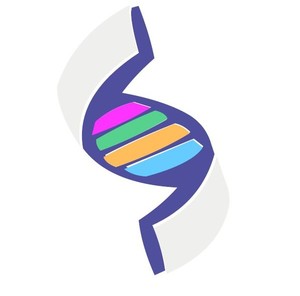One of the main barriers to biosimilar entry in the US is the US biosimilars law [1]. While some have questioned whether the biosimilars pathway in the US will ever be used [2, 3], others believe that, although flawed, the US biosimilars pathway is likely to become a functioning legal pathway [4].
US biosimilars law
The legal pathway for biosimilars in the US (the Biologics Price Competition and Innovation [BPCI] Act) was signed into law on 23 March 2010 by President Barack Obama. However, the US is still waiting for practical guidance to be issued by FDA.
The BPCI Act is controversial and many believed poorly written, with many parts of the law being unclear and needing extensive judicial interpretation. Many biosimilars manufacturers also believe that the law is too much in favour of originator products, making it both a costly and lengthy process to approve a biosimilar. This has led some to believe that the biosimilars pathway will never be used and that biosimilars manufacturers will instead choose to go down the Teva path and use the normal route via a Biologic License Application (BLA) [3].
There are two key problems with the BPCI Act, see also Table 1:
- easy mechanism of ‘evergreening’ with moderate changes to the originator product and
- requirements to share the full biosimilar dossier with the originator company.
Although both create risks for biosimilar manufacturers, these risks are insufficient to render the framework unusable as:
- the commercial impact of next generation products without further clinical benefits will be moderate and
- the impact of dossier sharing can be reduced.
Table 1: Main provisions of the BPCI Act and their implications for biosimilars
| Provision
|
Description
|
Effect on biosimilars
|
| Approval
|
Requires safety, efficacy and potency. Suggests requirement of clinical trials but these can be waived by FDA.
|
Unlikely to be barrier
Final decision left to FDA
|
Originator
Exclusivity
|
12 years + additional 12 years for changes in primary structure or modifications leading to change in safety or potency.
|
Likely barrier
Easy creation of next generation molecules.
However, commercial impact will depend on clinical benefit.
|
| Patents
|
Biosimilar manufacturer must share full dossier with originator company.
|
Likely barrier
Having full dossier enables originators to more easily find points of patent infringement.
|
| Interchangeability
|
1-year exclusivity for 1st biosimilar with same impact on patients as the originator and that can be switched back and forth with the originator
|
Positive
Requires FDA interpretation, but could help biosimilars.
|
| User fees
|
Biosimilar applicants to pay for review in exchange for a 10-month review cycle.
|
Positive
Responsive agency and fixed timelines are worth the money.
|
Source: Bernstein Research
Some of the main provisions in the BPCI Act may prove to be barriers to biosimilar market entry, others, however, may prove to have a positive effect. The effect of these provisions on biosimilars is discussed below.
Approval of biosimilars
The BPCI Act requires that biosimilars demonstrate safety, purity and potency in at least one of the indications of the reference product. This also limits the biosimilar approval to the approved indications, doses and routes of administration of the originator molecule. However, the law allows FDA to waive these requirements.
Exclusivity of the originator biological
The BPCI Act allows for 12 years of exclusivity for the originator product. The provision also allows for a further 12 years of exclusivity for changes in the primary structure of the originator or modifications leading to changes in safety or potency. This will most likely lead to originator companies ‘evergreening’ their products by making small modifications to drugs just to obtain the extra exclusivity period. However, if these modifications do not have any significant clinical benefit then they may not be effective in preventing market shift to the biosimilar.
This issue may, however, force biosimilars to behave more like brand-name biologicals, with associated marketing costs.
Patent disputes
According to the BPCI Act a biosimilar application may be submitted to FDA four years after the initial approval of the originator biological. Once the biosimilar applicant receives notification from FDA that its application has been accepted for review, it must provide the full dossier to the originator company within 20 days.
The fact that the originator company will have full access to the submitted dossier may mean that the originator company may spot some small parts of the biosimilar developers process which may infringe on secondary originator patents. These kind of infringements are not usually detected in generic applications, due to the full dossier not being available to the originator company.
The availability of the full dossier may also enable originator companies to license new blocking drugs, word existing patent applications to include the biosimilar applicant’s process or design future patents in a way that makes it more difficult for biosimilar applicants to bypass them.
Interchangeabilty of biosimilars
Unlike in Europe, the US BPCI Act specifically describes interchangeability of biosimilars. This is the first time interchangeability has been defined in the law, as this is not the case in the Hatch-Waxman Act, which governs the approval of generics.
To obtain interchangeability a biosimilar must:
- produce the same clinical result in any given patient
- not result in any increased safety risk or reduced efficacy when alternating switching between biosimilar and originator.
The first biosimilar to achieve this standard will be rewarded by a 1-year exclusivity period.
Problems with these requirements include:
- Producing the same clinical result in any given patient could mean that tests are required in all sub-groups of patients, e.g. elderly, children, and different racial groups.
- Although it often occurs in clinical practice, it may prove difficult to establish ethically acceptable clinical trials with designs that prove no effect when switching biosimilar and originator products.
FDA has also indicated that it believes that biosimilarity must first be established before any studies into interchangeability can be performed. Once biosimilarity has been established drugmakers can then decide whether to further pursue interchangeability or not. This approach, however, has raised questions as to what would happen if a product was deemed not interchangeable [5].
Conclusion
The problem is that the wording of the BPCI Act is not clear and leaves room for significant interpretation. It has also been accused of being cumbersome, thus raising the costs and risks for biosimilar developers and as a result increasing the costs for US patients. Despite this the general consensus seems now to be that the biosimilars pathway, while flawed, will be used, although some manufacturers may still strategically opt for the BLA route.
Related articles
How profitable will biosimilars be
US$54 billion worth of biosimilar patents expiring before 2020
Biosimilars: barriers to entry and profitability in the EU and US
References
1. Gal R. Biosimilars: Reviewing US Law and US/EU Patents; Bottom Up Model Suggests 12 Products and $7-$8B Market by 2020. Bernstein Research. 26 May 2011.
2. GaBI Online - Generics and Biosimilars Initiative. US biosimilars pathway unlikely to be used [www.gabionline.net]. Mol, Belgium: Pro Pharma Communications International; [cited 2011 September 23]. Available from: www.gabionline.net/Guidelines/US-biosimilars-pathway-unlikely-to-be-used
3. GaBI Online - Generics and Biosimilars Initiative. Questions over US biosimilars pathway in light of Teva’s BLA [www.gabionline.net]. Mol, Belgium: Pro Pharma Communications International; [cited 2011 September 23]. Available from: www.gabionline.net/Biosimilars/General/Questions-over-US-biosimilars-pathway-in-light-of-Teva-s-BLA
4. GaBI Online - Generics and Biosimilars Initiative. Biosimilar regulatory issues [www.gabionline.net]. Mol, Belgium: Pro Pharma Communications International; [cited 2011 September 23]. Available from: www.gabionline.net/Biosimilars/Research/Biosimilar-regulatory-issues
5. GaBI Online - Generics and Biosimilars Initiative. FDA gives some insight into biosimilar pathway [www.gabionline.net]. Mol, Belgium: Pro Pharma Communications International; [cited 2011 September 23]. Available from: www.gabionline.net/Biosimilars/News/FDA-gives-some-insight-into-biosimilar-pathway
Source: Bernstein Research








 0
0











Post your comment